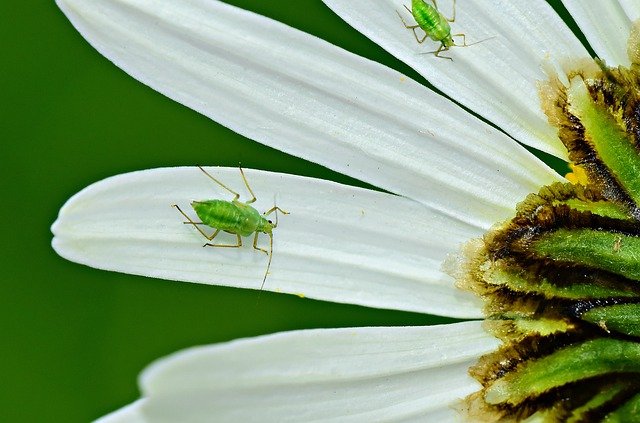Be it field created yields or terrace garden vegetables, all of them are at the most critical gamble of vermin, which can indulge your healthy harvest rapidly. Today we will give information about 20 such harmful bugs. 20 Harmful bugs in English
In the fields, the information of the peasant kin is useful and they continue to make arrangements to deal with them; But in home gardens these irritations much of the time damage our plants.
You may be astonished to realize that the vast majority of bugs cause no harm and some are very beneficial to plants; Coincidentally, all bugs have some kind of important work in maintaining our current circumstance.
20 Harmful insects are as follows
1- Aphids
Aphids feed on insects with pale green translucent bodies that are viewed as attached to leaves and delicate twigs.
It crawls gradually and absorbs the sap of the tree, taking cover behind the leaves in the daylight. By laying similar eggs, its number increases significantly in a couple of days.

2- Jassid
It is a paste based on small leaves, it fills the stomach by absorbing the youthful delicate leaves.
Sweltering and dry climate is best for their development. The leaves become yellow and become cup-shaped because of sap overflowing from the leaves.

3- Fruit borer
The female of this bug lays eggs around the blossom buds. After hatching, the larvae enter the buds.
After the blossom has shaped, it remains in the products of the soil to obtain nourishment from the organic product itself, ruining the organic product.
At the point when it develops, it punctures the leafy foods out from inside and falls to the ground.

4- Black beetle
Eating the leaf sap causes webbing of the leaves and spoils the leaves.
If these insects come in contact with the skin, there is a risk of burning.

5- Dead bug
The mealy bug keeps on discharging a white wax from body covers its pink body and turns it white.
It sticks to the branch and keeps on sucking the sap from it; When a tree is seriously attacked, the twigs weaken and the plant gradually evaporates.

6- Root maggot
It attacks the roots rather than the top of the plant. You can’t see and stay under the soil and absorb the roots.
7- Red spider mite
These tiny mites live under the leaves and suck the sap. This causes the leaves to fall.
Sometimes webs made by it are also seen on the tree.

8- Gall mite
These are very fine mites, they also live by sucking the sap of the tree, thus spoiling the growth of the tree.
9- Leaf minor
There are many sorts of insects that live in their larval stages, these insects incorporate many kinds of flies, moths, sawflies and creepy crawlies that live on leaves, causing white spots or white legs on the leaves.
10- Earwig
It feeds mainly on the flowers of dahlias, chrysanthemums and clematis.

11- Woolly aphid
The body of this insect is coated with a waxy white filament, which looks like cotton or wool.
12- Cabbage caterpillar
This fast-eating bug annihilates the yield by eating captive gobi and its varieties.

13- Cut worms
It cuts off young and new plants, it eats plants by cutting them near or below the soil surface.

14- Thrips
It damages the plant by sucking sap from plant parts like natural products, blossoms and leaves; Leaves become yellow and bite the dust.
The plants it attacks become wilted, stained and shriveled. It can also be a carrier of many viral diseases.

15- Snail
Snails can be large or small in size and feed on almost all aspects of the plant. Many snails go after parasites or mushrooms.

16- Slug
Slugs live on broad-leaved plants and weeds and can cause a great deal of harm to your garden.
They make their food on all parts of the plant like leaves, stems, roots and even seeds.

17- Weevil
Larvae feed on roots by biting or nibbling, while adults feed on leaves at night.

18- Cricket
They continue annihilating by eating or gnawing grass, weeds, leaves, shrubs and so on. It can cause enormous misfortunes in a brief timeframe.

19- Locust
By eating grass, weeds, leaves, brambles and so forth, they break or bite grasshoppers. It can also cause enormous misfortunes in a brief timeframe.

20- White fly
It has a needle-like construction through which it penetrates the leaves and absorbs its juice or sap.
This causes the leaves to become spotted as they feed on the underside of the leaves.

Tell us what you consider this information by remarking and make certain to stir things up around town button beneath for really fascinating and useful information related to similar plants and trees. Stay associated, thanks.
Happy gardening..
















